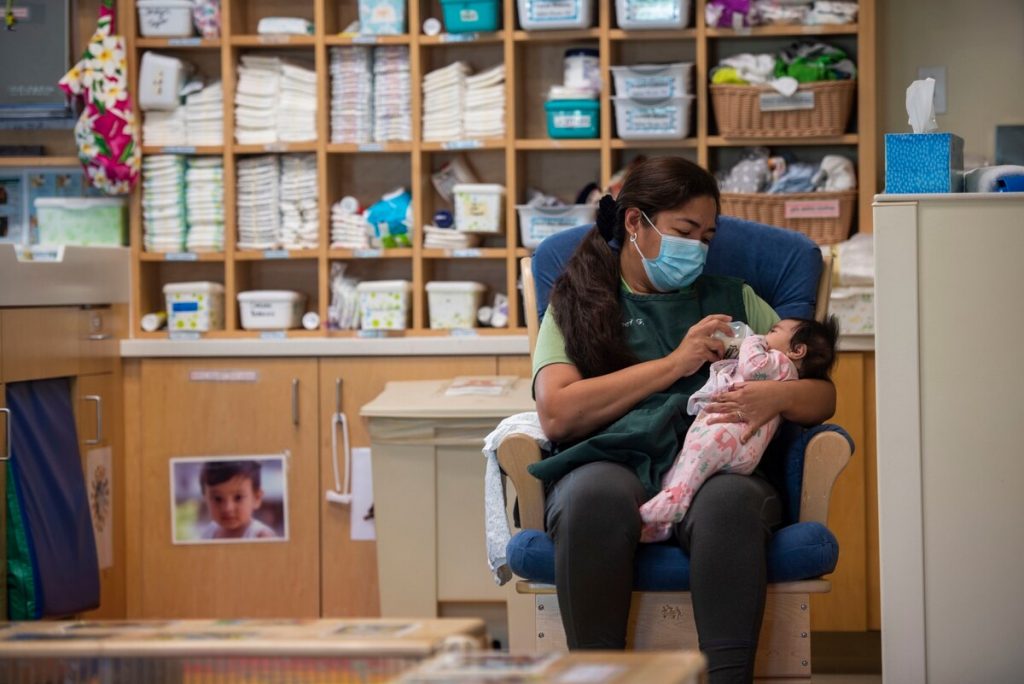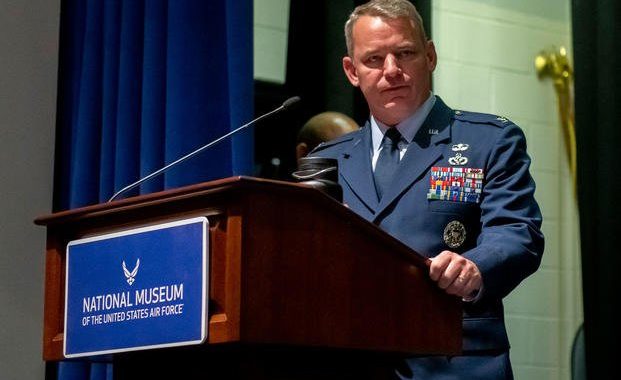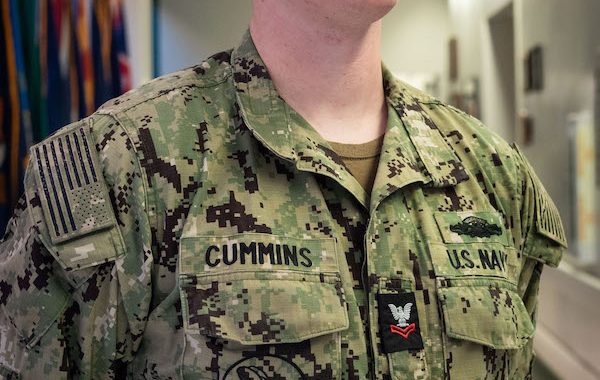Military Child Care Starts Limited Reopenings. Which Children Will Get In?
7 min read
As some military child care centers and youth centers are starting their phased reopening during the pandemic, there will be fewer spaces available because of social distancing and other health requirements.
Well before COVID-19, there were shortages of child care at a number of military installations. But during the pandemic many child development centers either shut down or stayed open with very limited capacity, with some caring for children of essential personnel only. It’s unknown how many children have been affected, as the numbers vary from base to base, but overall, the DoD child development programs have spaces for about 200,000 children.
Officials have been looking closely at capacity issues across the Army and across the services. “That capacity that may have existed on an installation at this time last year might be squeezed a little bit as we put in those safety factors,” said Maj. Gen. Tammy Smith, military assistant to the assistant secretary of the Army for manpower and reserve affairs.
“We know we’re going to have some unique challenges as our child development centers and our youth programs begin to open up a little bit,” she said, as officials balance capacity against the safest thing for children in a facility to make sure they are free from any exposure to COVID, said Smith, who spoke during a recent town hall program of the Association of Defense Communities and Blue Star Families.
That’s going to be the case for most areas, with the “conditions-based” reopening approach.
“The frustrating thing right now is this time of COVID is that there are so many questions that are unanswered,” said Nicole Russell, government relations deputy director for the National Military Family Association.
“Especially when it comes to child care, of course we all want to see child care opened, and everybody get the spot that they had before, but the reality has changed. We have to take certain health and safety measures into account. I don’t know what the right answer is. A lot of installations are trying to figure out what the right answer is,” she said.
The services are pointing service members to their fee assistance programs as a possible alternative. Child care outside the installation is often more expensive than military child care, and this program helps subsidize the cost of child care from providers off the installation — for troops who can find child care in the civilian community. The fee assistance programs are funded by the services and offered through the non-profit Child Care Aware, which can help service members find child care that meets requirements for quality.
The Army has increased their fee assistance funding for care outside the installation, Smith said.
Eligible Air Force families displaced from on base child care because of COVID-19 may also apply for temporary fee assistance to attend a civilian child care center, and return to their on-base child care when the installation program resumes full operations, said Air Force spokeswoman Capt. Carrie Volpe.
DoD guidance on priorities and openings
Defense officials have issued guidance for commanders to consider when bringing back the workforce, and returning child development programs to normal operations, in a June 10 memo to the services, signed by Virginia Penrod, acting assistant secretary of defense for manpower and reserve affairs.
That includes “measured activities” commanders will consider at each HPCON level when allowing programs to return to normal operations or expand the number of children. For example, at HPCON C, local installation officials will first determine how many staff members are available to work, and will survey currently enrolled families to find out the date they will need child care. Child care and school age care programs that are closed should stay closed unless they’re needed to open to meet mission-essential personnel requirements.
The memo also includes priorities for child care spaces:
*The new DoD rules which give higher priority for child care spaces to military members, doesn’t go into effect until Sept. 1– and bases can’t use that new system before then.
*Commanders should consider continuing to allow appropriate personnel flexibilities such as telework, for service members with the ability to personally care for their children, to make the best use of limited child care spaces.
“Installations are providing Child and Youth Program support based on mission requirements and public health health conditions at their location as they plan for transitions back to full operations,” said Air Force spokeswoman Capt. Carrie Volpe. Local commanders and child development program officials are working with service members to make sure mission and family requirements are met, she said.
Capacity decisions in child development programs are made by installation leaders working with their Public Health Emergency Officer and other local health authorities based on the most up-to-date information about COVID-19 and local conditions. Capacity depends on the availability of staff and the Health Protection Condition (HPCON) factors. These leaders decide the minimum number of classrooms and direct-care staff needed to take care of the children of single/dual military members who must work; military members with a spouse who must work; and other eligible patrons required to return their place of work. If there aren’t enough staff available, leaders are encouraged to give first priority to mission-essential personnel.
“We are working hard to optimize capacity while prioritizing the health of our children, youth, families and staff who are involved in Child and Youth Programs,” Volpe said. Their recruitment of family child care home providers is ongoing to help increase the amount of child care.
During the pandemic, installations have developed local guidance to support the child care needs of mission-essential personnel at a reduced capacity. As local installation officials determine they’re prepared for a phased re-opening, installations will place previously enrolled children back into child care following local mission essential guidance, current DoD priorities and recommended safety measures from the Centers for Disease Control and Prevention, said Marine Corps Community Services spokesman Brian Condon.
The Marine Corps “is reviewing all possible scenarios to mitigate issues that may arise due to reduced capacities,” Condon said.
A re-opening checklist and training materials have been provided to all Marine Corps child and youth program officials, with a phased approach to re-opening recommended. The programs may consider increasing their capacity depending on local public health guidance, staff availability and the needs of the command.
Here’s what phased reopening looks like:
HPCON C: Child and Youth programs operate at reduced capacity, adhering to guidance from local public health authorities while maintaining health and safety of children and staff. Facilities that are currently closed should stay closed unless required to open for mission-essential personnel. In addition to steps such as determining staff availability and surveying currently enrolled families to find out when they need child care, programs operate at reduced/minimum hours; suspend supplemental programs such as hourly care; determine course of action when someone tests positive after coming in contact with families or staff; increase frequency of cleaning and sanitizing high-touch areas; conduct health screening of each person at the facility entrance.
The 6-foot social distancing includes having children sleep six feet apart at nap time if possible, or placed head-to-toe; keeping children a chair distance away at meal time; no family-style dining, tooth brushing or water table usage; adults wear face coverings when feasible, and children over age 2 wear the coverings when they can’t practice social distancing. Centers should make a plan for parents to drop off and pick up children safely. Centers should keep the same child in the same group each day with the same staff.
HPCON B: Child and youth programs consider increased capacity as determined by local public health guidance, staff availability and needs of the command. Continue to assess staff availability and review priorities for care under HPCON C; continue increased cleaning and sanitizing; child care facilities and organized youth activities can reopen with precautionary measures; continue face-covering and health screening, and social distancing.
HPCON A: Return to normal operating capacity. Encourange physical distancing but face coverings aren’t required except as directed for appropriate categories of personnel; continue health screening of individuals at the facility entrance.





